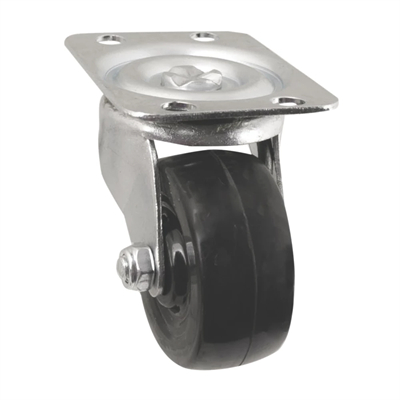Rigid casters play a crucial role in medical equipment applications, where precision, stability, and durability are paramount. They are often used on various types of medical equipment to ensure controlled movement and reliable performance. Here are some common applications of rigid casters in the medical field:
- Hospital Beds: Hospital beds are equipped with rigid casters to provide stability and controlled movement, allowing healthcare providers to easily position patients for treatment or transport.
- Stretchers: Stretchers used for patient transport within medical facilities or during emergencies use rigid casters for precise control and stability during movement.
- Mobile Exam Tables: Mobile exam tables in medical offices and clinics often incorporate rigid casters to enable easy positioning for patients during examinations and procedures.
- Medical Carts: Medical carts, such as medication carts, crash carts, and equipment carts, use rigid casters to provide controlled and stable movement for the safe transport of supplies, medications, and medical equipment.
- Wheelchairs: Wheelchairs may feature rigid casters at the front to allow for better maneuverability and control, especially in outdoor environments or situations where precise navigation is required.
- Surgical Tables: Surgical tables require precise positioning during surgeries. Rigid casters contribute to the stability and accurate adjustment of these tables to ensure the safety and well-being of patients.
- Imaging Equipment: Mobile imaging equipment, such as X-ray machines and ultrasound machines, use rigid casters to facilitate the transportation and positioning of heavy and sensitive medical devices.
- Laboratory Equipment: Laboratory equipment, such as centrifuges, microscopes, and incubators, may be equipped with rigid casters for controlled movement and positioning during research and diagnostics.
- Rehabilitation and Therapy Equipment: Equipment used in physical therapy and rehabilitation settings often use rigid casters to provide stability while enabling controlled movement and precise positioning.
- Respiratory and Life Support Devices: Life support equipment, such as ventilators and oxygen delivery systems, may incorporate rigid casters to facilitate their movement within healthcare facilities.
- Dialysis Machines: Rigid casters are used on dialysis machines to ensure stability during treatment sessions and to allow healthcare providers to easily reposition the equipment.
- Radiation Therapy Equipment: Radiation therapy equipment, including linear accelerators, rely on rigid casters for precise positioning to accurately deliver radiation to the targeted area during cancer treatment.
- Dental Chairs and Equipment: Dental chairs and equipment in dental offices use rigid casters for controlled movement and positioning during dental procedures.
- Phlebotomy and Blood Collection Chairs: Chairs used for blood collection and phlebotomy procedures are equipped with rigid casters to ensure that healthcare providers can easily position patients for blood draws.
Rigid casters in medical equipment applications must meet stringent standards for cleanliness, infection control, and reliability. They are designed to provide a stable and controlled movement that is crucial for the safety and well-being of patients and the efficiency of healthcare providers.


